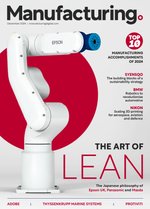Digital transformation: evolving manufacturing communication

Andrew Borland, Industrial Engagement Manager at VEC, explains how technologies have revolutionised communication for competitive edge and growth.
Digital engineering technologies are expanding the boundaries for business, enabling manufacturers to make a paradigm shift in their product development and manufacturing processes and enhance their commercial offer.
Those which have embedded advanced technologies into their long-term business strategy have seen production times sped up, risk reduced, efficiency enhanced and operational costs cut.
The potential impact is significant – The Made Smarter Review estimates that digital adoption could lead to a 25% increase in productivity for UK industry - but the benefits are not purely operational. Improved client relations are another key factor to consider.
Advanced modelling, simulation and visualisation have the potential to revolutionise the traditional 2D design approach, creating virtual tools which allow a customer not just to see their product in the making, but to experience and influence the process at multiple stages. This serves to close the gap between both customer and product, and company and client.
Game engine software applied in the engineering environment means sophisticated, highly realistic simulations of a product can be created and viewed by the client from the prototype phase onwards, via a standard PC or across platforms. Informed decisions about design modifications can be made in the virtual environment before any physical model is manufactured. Cost efficiency is an obvious benefit, but it also lends the manufacturer a responsiveness and flexibility that are invaluable in terms of customer service and satisfaction.
This enhanced communication comes irrespective of geographical location. New markets are therefore opened up to companies keen to extend their commercial reach. The lack of motorway miles is another important consideration for those with a commitment to reducing their carbon footprint. The use of a visual medium overcomes language barriers allowing new export dialogues to be opened to drive international export growth.
Focus on these wider factors and digitalisation becomes not simply a means to make operations more efficient, they can give even the smallest business added competitive edge over bigger players.
SEE ALSO:
For more information on manufacturing topics - please take a look at the latest edition of Manufacturing Global.

